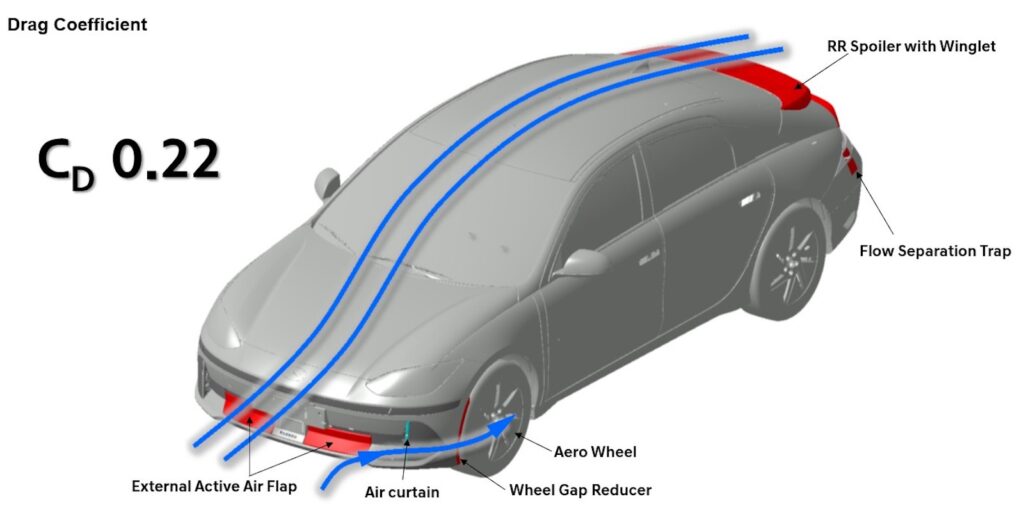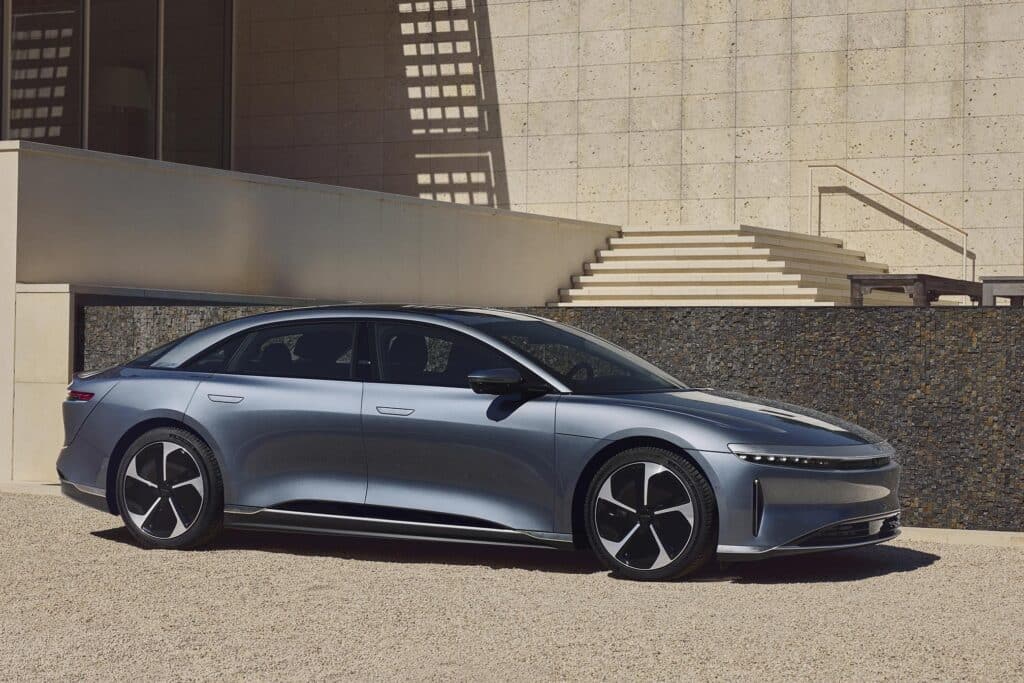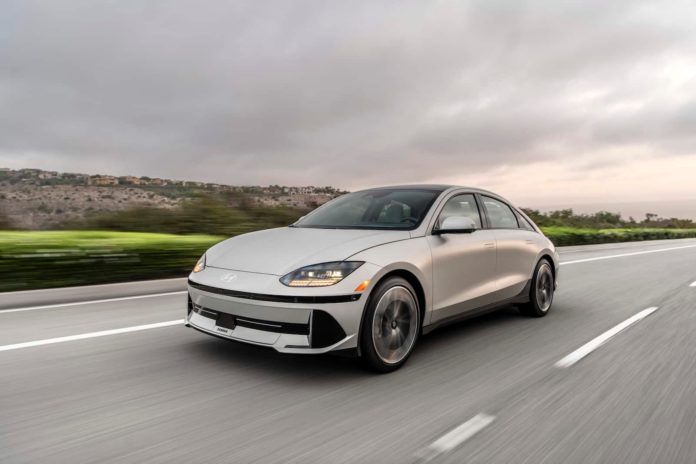Hyundai announced its all-electric 2023 Ioniq 6 SE RWD Long Range trim achieved an EPA-estimated range of 361 miles on a full charge.
The EPA figures work out to 140 combined MPGe for the model. That rating equals the efficiency of two Lucid Air models that are at the top of Fueleconomy.gov’s 2023 Top Ten Vehicles list.
The dual-motor Ioniq 6 SE AWD Long Range was rated at 316 miles in the same test. The SEL and Limited trims both ranged 305 miles with RWD and 270 miles in their AWD configurations.
“Continually improving the efficiency of our vehicles is always a top priority for our development teams,” said Olabisi Boyle, vice president, product planning and mobility strategy, Hyundai Motor North America.
“Instead of just adding a larger battery to increase the range, we chose to optimize Ioniq 6’s aerodynamic performance and its Electric-Global Modular Platform for efficiency to produce these long driving ranges.”
Ultra-aerodynamic design

One reason for the increase in efficiency is the Ioniq 6’s ultra-low drag coefficient of 0.22. The overall aerodynamic design of the vehicle is assisted by a low nose, active air flaps, wheel gap reducers, an elliptical wing-inspired spoiler with winglet, slight boattail structure, separation traps on both sides of the rear bumper, full underbody cover, deflectors and reduced wheel-arch gaps. All of these features work together to allow the Ioniq to slip through the air more easily than most vehicles.
The real news with the Ioniq 6 range rating is that these figures were achieved with a standard-range battery of 53 kWh capacity, and a long-range battery of 77.4 kWh. That yields a miles-per-kWh figure of 4.66 for the long-range and 5.75 for the standard range batteries. The standard range offers a better miles-per-kWh figure because of the lighter weight of batteries in the vehicle.

Efficiency is not the enemy of performance, either. The Ioniq 6 in rear-drive configuration offers 149 horsepower, while the long-range motors offer 225 horsepower in rear-drive single motor configuration and 320 horsepower with the dual-motor setup. The dual-motor long range configuration is capable of 0-60 acceleration in under 5 seconds, so buyers are not giving up much power for the increase in efficiency.
Comparative efficiency
The comparison in MPGe with the Lucid Air is about overall efficiency. With batteries sized at 112 to 118 kWh of capacity, the Lucid products offer as much as 4.62 miles-per-kWh. The Tesla Model 3 provides as much as 4.17 miles-per-kWh, for comparison.
Less aerodynamic or weight-efficient vehicles tend to offer about 3.3 to 3.6 miles-per-kWh, and these are still the most efficient EVs on the market today, after the Ioniq 6 and Lucid Air. Vehicles in this range include the Chevrolet Bolt and Bolt EUV, Hyundai Kona and Ioniq 5, Tesla Models S and Y, and the Kia EV6 and Niro EV.
As EVs make up a greater percentage of new cars sold, these measurements of efficiency will become more commonly understood and valued. The laws of physics haven’t changed, so weight and aerodynamics will continue to play a major role in any vehicle’s energy efficiency.

